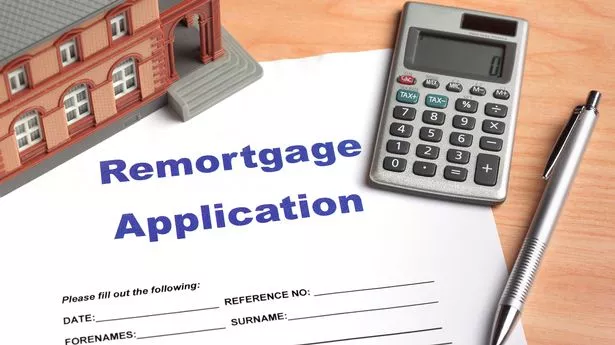How To Do Remortgage To Release Capital: How It Works

Table of Contents
ToggleRemortgage to Release Capital
Welcome to our comprehensive guide on remortgaging to release capital! Many homeowners need to be made aware of the untapped potential within their properties, and a strategic remortgage can be the key to unlocking that hidden value. In this blog post, we’ll explore the basics of remortgaging, why it’s a viable option for capital release, and the essential steps to get started. Whether you’re looking to fund home improvements, invest in a new venture, or consolidate debts, this guide will walk you through leveraging your home equity wisely. Let’s embark on this financial journey together and discover the possibilities that remortgaging can offer!
What is remortgaging to release capital?
Remortgaging to release capital, also known as equity release or equity release mortgage, is taking out a new mortgage on your existing property to access the equity you have built up in it. Equity is the difference between the current market value of your home and the amount you still owe on your mortgage.
When you remortgage to release capital, you are essentially borrowing against the equity in your home. This means you will take out a new mortgage larger than your existing one, and the difference between the two mortgages will be paid out to you in cash.
There are several reasons why people might choose to remortgage to release capital. Some common reasons include:
- To make home improvements: If you want to renovate your home, such as extending or adding an extra room, remortgaging to release capital can be an excellent way to finance the work.
- To consolidate debt: If you have several outstanding debts, such as credit cards or loans, remortgage to release capital can be a way to consolidate them into a single mortgage. This can make your repayments more manageable and save you money on interest.
- To fund your retirement: If you are approaching retirement, remortgaging to release capital can be a way to provide yourself with a lump sum of cash that you can use to supplement your pension or fund your lifestyle.
How does remortgaging to release capital work?
Remortgaging to release capital involves taking out a new mortgage on your existing property to access the equity you have built up in it. This equity is the difference between the current market value of your property and the amount you still owe on your mortgage.
Here’s a step-by-step explanation of how remortgaging to release capital works:
- Assess your equity:Determine your property’s equity by subtracting the outstanding mortgage balance from the current market value. This will give you a rough estimate of the capital you can release.
- Determine your borrowing needs:Decide how much capital you want to access through remortgaging. Consider the purpose of the funds and make sure the amount is manageable within your financial capacity.
- Compare mortgage deals:Shop around for the best mortgage deals available. Compare lenders’ interest rates, repayment terms, and fees to find the most favourable option.
- Apply for remortgaging:Once you’ve chosen a lender, complete the application process. This typically involves providing financial information, proof of income, and a valuation of your property.
- Legal formalities:Upon approval, you’ll need to finalize the legal paperwork, including signing the new mortgage deed and arranging to release funds.
- Receive the capital: Once the remortgaging process is complete, you’ll receive the lump sum of capital you’ve released from your equity. Use the funds as intended for home improvements, debt consolidation, or retirement planning.
Benefits of remortgaging to release capital
Remortgaging to release capital can provide a range of benefits, including:
- Access to a lump sum of cash:Remortgaging allows you to access a significant amount of capital that you can use for various purposes, such as home improvements, debt consolidation, funding education, or supplementing your retirement income.
- Potential interest savings:If you can secure a lower interest rate on your new mortgage, you may save money on your monthly repayments over the long term.
- Consolidation of debts:Remortgaging can be a convenient way to consolidate multiple debts, such as credit cards or loans, into a single mortgage. This can simplify your finances and potentially reduce overall interest costs.
- Flexibility in usage:The capital released from remortgaging can be used for various personal and financial goals, offering flexibility in utilising the funds.
- Retain ownership of your property:Unlike equity release schemes, remortgaging allows you to own your home fully. You maintain control over your property while accessing the equity you have built up.
- Potential tax benefits:In some cases, mortgage interest payments may be tax-deductible, which could provide additional financial relief.
Drawbacks of remortgaging to release capital
Remortgaging to release capital while offering potential financial benefits also carries certain drawbacks that you should carefully consider before making a decision. Here are some of the key drawbacks of remortgaging to release capital:
- Increased Mortgage Debt:You increase your debt by taking out a new mortgage. This means you will have a larger amount to repay over the loan term, potentially extending the period of your mortgage and increasing the total interest paid.
- Early Repayment Charges:If you decide to repay your new mortgage early, you may face early repayment charges (ERCs). These charges negate any savings you have gained from remortgaging.
- Potential Negative Equity:Negative equity occurs when the value of your property falls below the outstanding mortgage balance. This can happen due to fluctuations in the housing market. If you end up with negative equity, it can limit your ability to move or remortgage your property in the future.
- Impact on Credit Score:Remortgaging involves a credit check, which can temporarily impact your credit score. This could affect your ability to borrow money, particularly if you must apply for a loan or credit card shortly after remortgaging.
- Costs Involved:Remortgaging involves various fees and costs, such as valuation fees, legal fees, and potential early repayment charges. These costs can add up and reduce the overall capital you receive.
- Reduced Equity in Your Home:Remortgaging to release capital reduces the equity you have built up in your home. This can limit your options for using your property as an investment or security in the future.
- Potential for Financial Strain:Using the released capital to finance non-essential expenses could lead to financial strain in the long run. It’s essential to carefully consider the purpose of the funds and ensure that they align with your long-term financial goals.
- Potential for Misuse of Funds:It’s essential to have a clear plan for using the released capital. If not used wisely, it could lead to financial difficulties in the future.
How to check your eligibility for remortgaging to release capital
Here are the steps on how to check your eligibility for remortgaging to release capital:
- Check your age:Most lenders have a minimum requirement for remortgaging to release capital, typically 55 or 60.
- Assess your equity:You need significant equity in your property to be eligible for remortgaging to release capital. This means that the current market value of your home should be substantially higher than the outstanding balance on your mortgage.
- Evaluate your credit score:Lenders will consider your credit score when assessing your eligibility for remortgaging to release capital. A good credit score indicates your creditworthiness and increases your chances of being approved.
- Calculate your affordability:You need to demonstrate that you can afford the increased mortgage repayments that will come with remortgaging to release capital. Lenders will assess your income, expenses, and existing debts to determine your affordability.
- Check your property type:Not all property types are eligible for remortgaging to release capital. Some lenders may have restrictions on certain types of properties, such as flats, leasehold properties, or properties in specific areas.
How to get a quote for remortgaging to release capital
To obtain a quote for remortgaging to release capital, you can follow these steps:
- Gather your financial information:Before contacting lenders, gather all relevant financial documents, such as bank statements, mortgage statements, payslips, and P60 forms. This will help lenders assess your financial situation and provide accurate quotes.
- Contact multiple lenders:Don’t limit yourself to just one lender. Get quotes from reputable mortgage providers to compare interest rates, fees, and other terms and conditions. This will ensure you find the most competitive deal.
- Provide your property details:When contacting lenders, provide the details of your property, including its address, type, and estimated market value. This will help lenders determine the amount of equity you have and the potential loan amount you qualify for.
- Specify the amount you want to release:Inform lenders of the capital you want to release through remortgaging. This will help them tailor their quotes to your needs and provide relevant options.
- Check the lender’s eligibility criteria:Review the lender’s eligibility criteria to ensure you meet their requirements, such as age, credit score, employment status, and debt-to-income ratio.
- Compare quotes carefully:Once you have quotes from multiple lenders, compare the interest rates, fees, and other terms and conditions carefully. Consider the overall cost of the mortgage, not just the headline interest rate.
How to decide how much equity you want to release
Deciding how much equity you want to release from your home through remortgaging requires careful consideration of your financial situation, goals, and risk tolerance. Here are some factors to consider when making this decision:
- Purpose of the funds: Clearly define the purpose of the funds you intend to release from your home equity. Whether for home improvements, debt consolidation, funding education, or supplementing retirement income, having a clear goal will guide your decision.
- Available equity: Determine how much you have built up in your home. This is the difference between the current market value of your property and the outstanding balance on your mortgage. A valuation can provide an accurate estimate of your equity.
- Affordability: Assess your ability to afford the increased mortgage repayments that will come with releasing equity. Consider your income, expenses, and debts to ensure you can comfortably handle the new mortgage payments.
- Impact on your financial goals: Evaluate how releasing equity will impact your overall financial goals, such as early mortgage payoff, retirement savings, or future investment plans. Ensure that the benefits of releasing equity outweigh any potential negative impacts on your long-term financial objectives.
- Risk tolerance: Consider your risk tolerance and the potential risks of releasing equity. This includes the risk of negative equity if property values decline, increased mortgage debt, and potential impact on your credit score.
How to complete the remortgage application
The remortgage application process involves several steps and requires thorough preparation to ensure a smooth and successful outcome. Here’s a comprehensive guide on how to complete the remortgage application:
Step 1: Gather your financial documents
Before you start the application process, gather all necessary financial documents to support your application. These typically include:
- Proof of income: Recent payslips, P60 forms, or self-assessment tax returns for self-employed individuals
- Bank statements: Recent bank statements to demonstrate your financial transactions and ability to manage repayments
- Proof of identity: Passport or driving license for identification purposes
- Proof of address: Utility bills, council tax statements, or recent bank statements to verify your address
- Mortgage statements:Current mortgage statements to provide details of your existing mortgage
- Property details: Title deeds, property valuation, or recent EPC (Energy Performance Certificate)
Step 2: Compare mortgage deals and select a lender
Shop around for the best mortgage deals available. Use online mortgage comparison tools or speak to independent mortgage brokers to compare interest rates, fees, and terms from different lenders. Consider factors like the total cost of the mortgage, early repayment charges, and flexibility in repayment options.
Step 3: Complete the online application form
Once you’ve chosen a lender, access their online application form and accurately fill in all required details. This typically includes personal, income and employment, property, and financial information.
Step 4: Provide supporting documentation
Upload or send scanned copies of the financial documents you gathered in Step 1. These documents give lenders the necessary information to assess your financial situation and creditworthiness.
Step 5: Valuation and property survey
The lender will arrange to evaluate your property to determine its current market value. This valuation is crucial for assessing the equity you have in the property and the maximum loan amount you qualify for. In some cases, the lender may also require a property survey to assess the condition of your home.
Step 6: Credit check and affordability assessment
The lender will conduct a credit check to review your credit history and assess your financial situation. They will also evaluate your affordability to ensure you can comfortably manage the increased mortgage repayments.
Step 7: Mortgage offer and acceptance
If your application is successful, the lender will issue a mortgage offer outlining the terms and conditions of the new mortgage. Carefully review the offer and ensure you understand all the details, including the interest rate, fees, repayment schedule, and any early repayment charges.
Step 8: Legal formalities and completion
Once you accept the mortgage offer, you must complete the legal formalities, including signing the mortgage deed and arranging to transfer funds. The lender will also contact a conveyancer to handle the legal aspects of the property transfer.
Step 9: Receive the released equity
Upon completing the remortgage process, you will receive the lump sum of capital you have released from your home equity. Use the funds as intended for home improvements, debt consolidation, or retirement planning.
How to get a valuation of your home
Obtaining a home valuation is essential in various situations, such as selling your property, refinancing your mortgage, or determining your equity. There are several methods for valuing your home, each with its advantages and limitations.
- Online Valuation Tools:
Online valuation tools provide quick and easy estimates of your home’s value. They typically use algorithms that consider factors like property type, location, size, and recent sales data in the area. While these tools can provide a general idea of your home’s value, professional appraisals may need to be more accurate.
- Comparative Market Analysis (CMA):
A CMA is a more detailed valuation method that compares your home to similar properties recently sold in your neighborhood. A real estate agent will typically conduct a CMA, considering factors like square footage, condition, amenities, and recent market trends. CMAs are generally more accurate than online valuations but require more time and expertise.
How to sign the remortgage agreement
Signing the remortgage agreement is a crucial step in the remortgage process. It legally binds you to the terms and conditions of the new mortgage, so it’s essential to carefully review and understand the agreement before signing.
Here’s a step-by-step guide on how to sign the remortgage agreement:
Step 1: Understand the terms and conditions
Before signing, thoroughly review the remortgage agreement, paying close attention to the following key aspects:
- Mortgage amount:Verify that the loan amount matches the agreed-upon figure and aligns with your financial requirements.
- Interest rate:Confirm the interest rate, ensuring it matches the offered terms and is competitive in the current market.
- Repayment schedule:Understand the repayment schedule, including the monthly payments, repayment period, and any early repayment charges.
- Fees and charges:Review all associated fees, such as application fees, valuation fees, and legal fees.
- Prepayment options:Check for any prepayment options or flexibility to make additional payments without penalty.
- Termination conditions:Understand the conditions under which the mortgage can be terminated and the implications of early termination.
Step 2: Seek legal advice
If you have doubts or complexities regarding the remortgage agreement, consider seeking legal advice from a qualified solicitor or conveyancer. They can review the agreement, explain the legal implications, and ensure your interests are protected.
Step 3: Sign the agreement
Once you have thoroughly understood the agreement and received legal advice if necessary, proceed with signing the document. Ensure you have a clear copy of the signed agreement for your records.
Step 4: Return the agreement
Return the signed remortgage agreement to the lender or their representative as instructed. They will process the paperwork and finalize the remortgage process.
Step 5: Stay informed
Maintain communication with the lender throughout the process and promptly respond to additional information or documentation requests.
How to receive the funds from remortgaging to release capital
Receiving the funds from remortgaging to release capital typically involves a straightforward process that follows the completion of the remortgaging application and legal formalities. Here’s a step-by-step guide on how to receive the funds:
Step 1: Finalize the remortgage process
Ensure that all aspects of the remortgaging process have been completed, including the following:
- Approved mortgage offer:The lender has issued an approved mortgage offer outlining the terms and conditions of the new mortgage.
- Legal formalities:All legal paperwork, including the mortgage deed and property transfer documents, has been signed and completed.
- Valuation and property survey:The property valuation and any required property survey have been conducted and the lender has accepted the results.
- Funding arrangements:The lender has arranged to release the funds from the new mortgage.
Step 2: Confirm the release of funds
Contact your lender or conveyancer to confirm the release of the funds from the new mortgage. They will provide an estimated timeframe for when you can expect to receive the funds.
Step 3: Receive the funds
Once the funds have been released, they will typically be transferred directly into your designated bank account. The lender will notify you when the transfer has been completed.
Step 4: Verify the amount
Upon receiving the funds, verify that the amount matches the agreed-upon figure for the released capital. If there are any discrepancies, contact your lender immediately.






